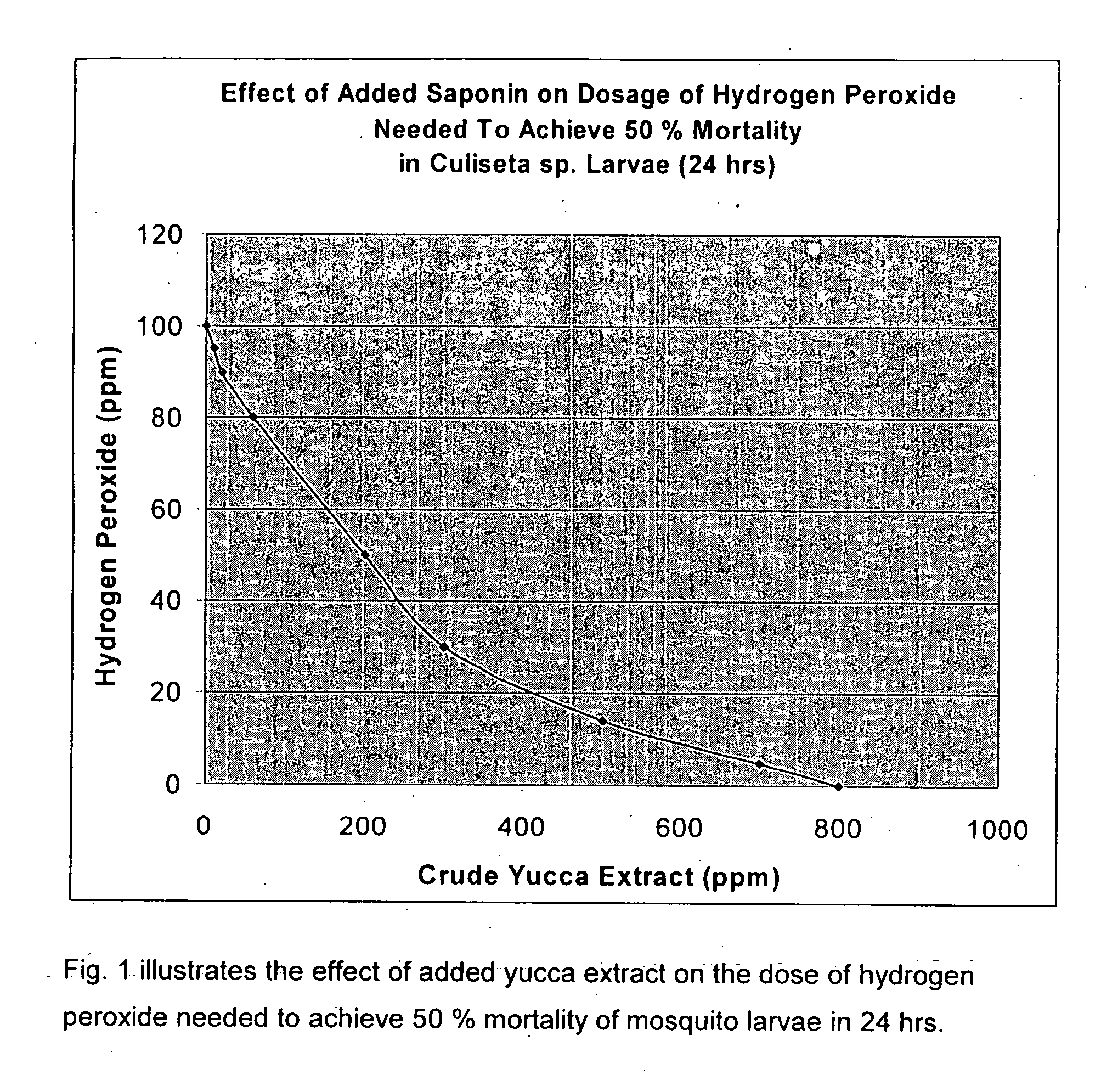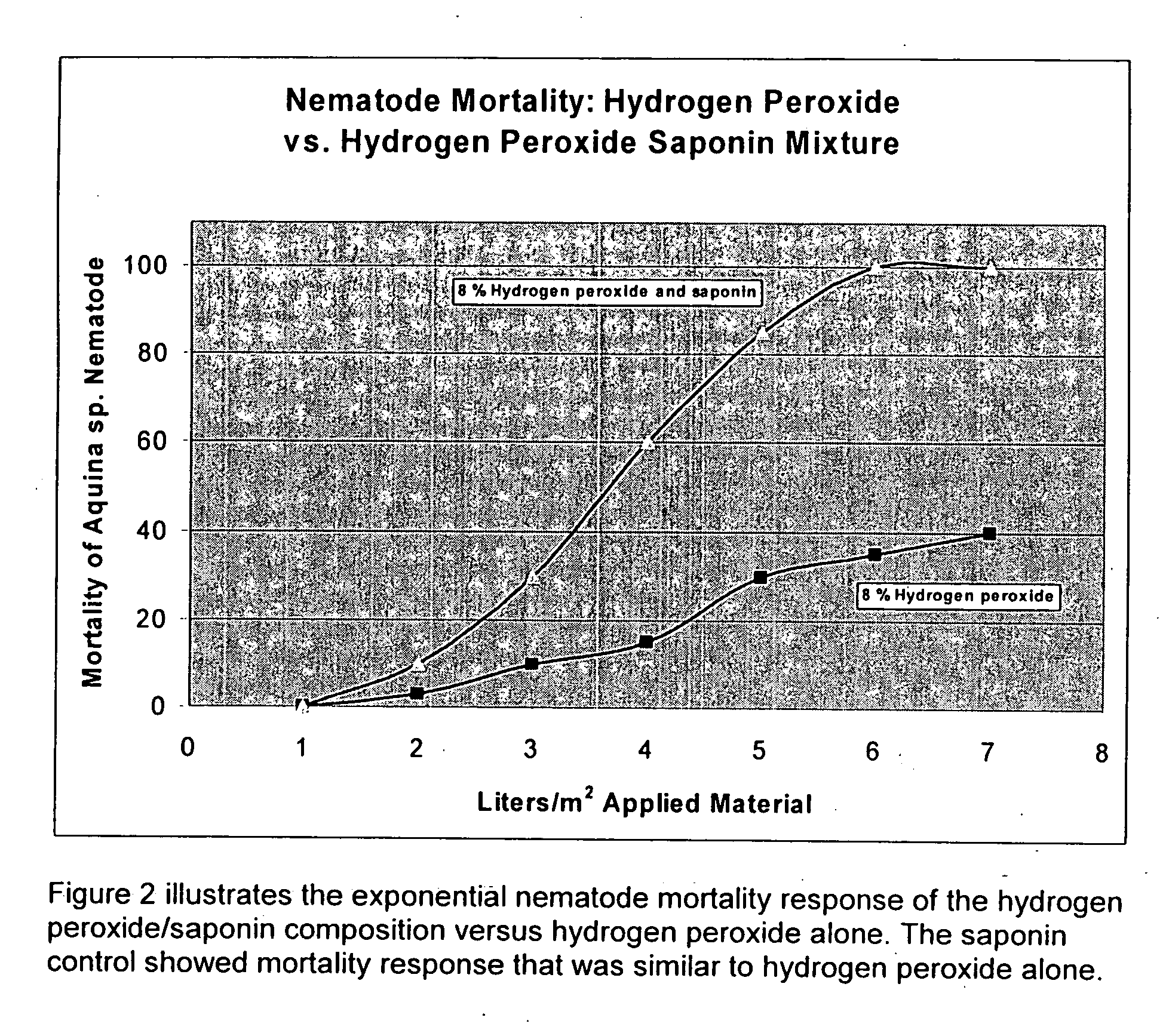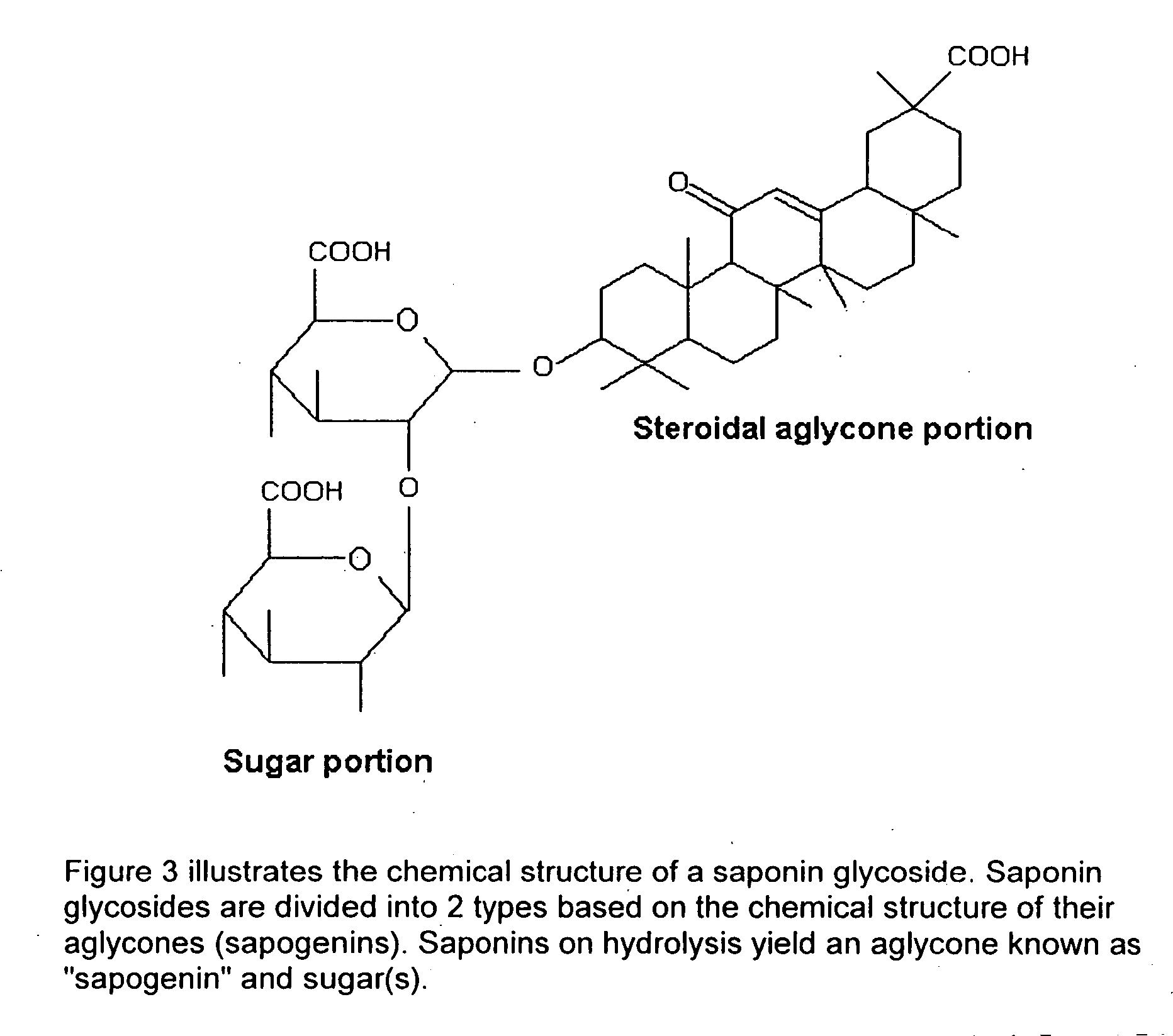Environmentally friendly pesticide and method of use
a pesticide and environmental protection technology, applied in the field of pesticide formulations, can solve the problems of pesticides presenting risks to human health, untold suffering and loss of human productivity worldwide, mosquito control, etc., and achieve the effect of enhancing the control and removal activity
- Summary
- Abstract
- Description
- Claims
- Application Information
AI Technical Summary
Benefits of technology
Problems solved by technology
Method used
Image
Examples
examples and alternative embodiments
[0070] The following examples are provided to be descriptive and illustrative only. They are not to be construed to be limiting in any way.
General
[0071] The reagents, chemicals, materials and solvents described are used as received from commercial suppliers unless otherwise noted. (See for example Chem Sources—USA, which is published annually.)
[0072] All percentage volumes are by weight. Hydrogen peroxide was conventional.
[0073] The organic acids, e.g. citric, ascorbic, etc. were conventional.
[0074] The saponin used was conventional and is available from sources such as Desert King International, 7024 Manya Circle, San Diego, Calif., 92154 and Agroindustrias El Alamo, S.A. de C.V., P.O. Box 530324, San Diego, Calif., 95123-0324
example 1
Control of Algae in a Golf Course Water Hazard
[0075] A golf course water hazard in Northern California contained a choking growth of string algae during the summer months. These growths were mostly confined to the edges of the water body. Previous methods used to destroy the algae included treatment with toxic copper sulfate, which resulted in the mortality of all flora and fauna in the water feature. Specifically, the waters and pond banks immediately surrounding the algal mat were selectively treated with an aqueous solution of 35% hydrogen peroxide containing 10% citric acid stabilizer, and 0.01% Yucca extract (saponin). After approximately one-half hour, the bulk of the algal mat turned white and broke loose by the oxidative action of the hydrogen peroxide, and was made buoyant by the attached oxygen byproduct thus formed. Other portions of the algal mat disintegrated and thus dispersed. These portions were not skimmed.
example 2
Control of Parasitic Nematode Worms in Turf at a Golf Course by Manual Spraying
[0076] A 300-acre golf course in Northern California contained Poa annua turf that suffered form an infestation of the root gall nematode Aquina pacificae. The infestation was manifested by dying and browning golf greens. Inspection of turf roots and galls revealed the presence of the nematode parasitic worm. Subsequent treatment by manual spraying of 1 acre test plots with an aqueous mixture of 8% hydrogen peroxide, 0.1% Yucca extract (20% active saponins, Yucca schidigera), and 2% citric acid resulted in the eradication of the gall nematodes. Approximately 5-10 gallons of the composition was broadcast / acre. Comparison to control plots containing the individual components at the applied volumes and concentrations revealed only small changes in the nematode populations.
PUM
 Login to View More
Login to View More Abstract
Description
Claims
Application Information
 Login to View More
Login to View More - R&D
- Intellectual Property
- Life Sciences
- Materials
- Tech Scout
- Unparalleled Data Quality
- Higher Quality Content
- 60% Fewer Hallucinations
Browse by: Latest US Patents, China's latest patents, Technical Efficacy Thesaurus, Application Domain, Technology Topic, Popular Technical Reports.
© 2025 PatSnap. All rights reserved.Legal|Privacy policy|Modern Slavery Act Transparency Statement|Sitemap|About US| Contact US: help@patsnap.com



